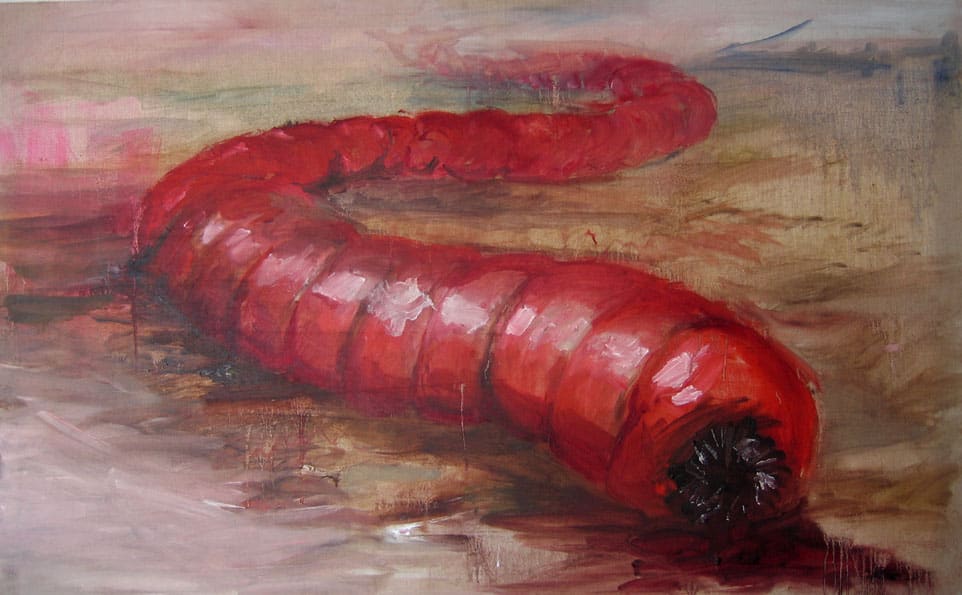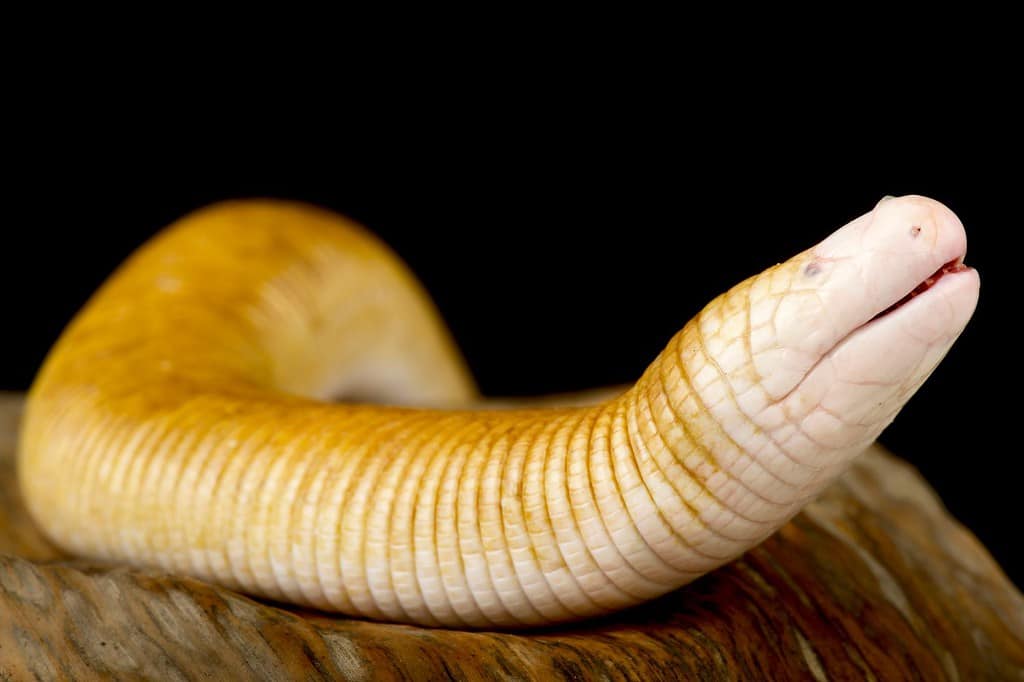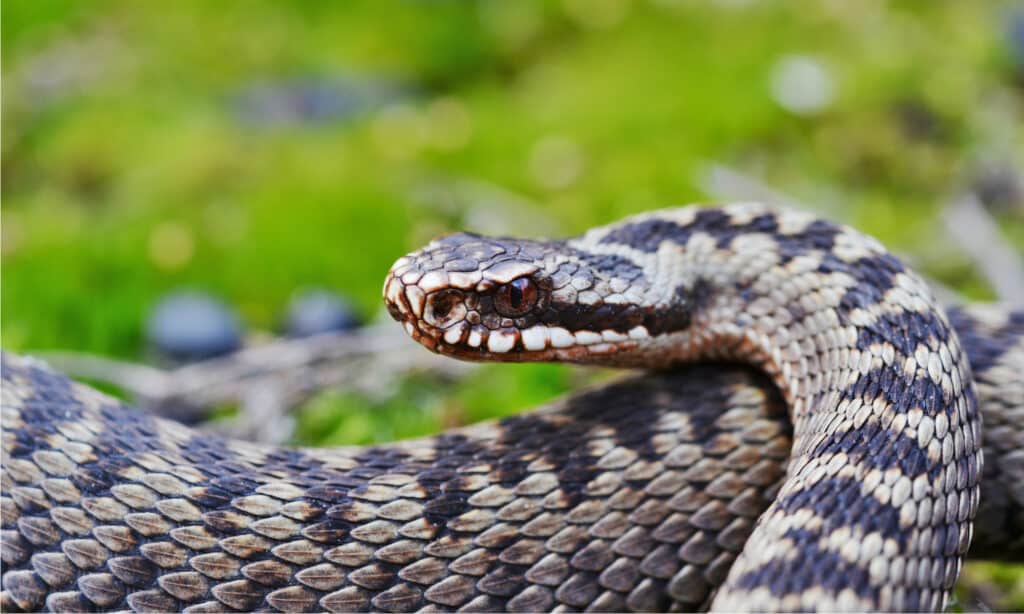The Mongolian death worm is an elusive desert cryptid. It has captured the fascination of locals and the international community to the point that the Mongolian government has sponsored expeditions to locate it. However, a Mongolian death worm has never been captured. Despite this, the search continues to this day. Are Mongolian death worms fact or fiction?
What Is the Mongolian Death Worm?

The Mongolian death worm is a cryptid in the Gobi Desert.
©The original uploader was Pieter0024 at English Wikipedia, via Wikimedia Commons – Original / License
The Mongolian Death Worm is a cryptid that’s about 2 feet in length. If anyone touches it, the victim instantaneously dies because it’s extremely poisonous. It can also attack prey or threats by spraying toxic yellowed saliva or using electricity.
Its poisonous saliva is purported to be so strong that it dissolves anything organic when it contacts it. As a result, most of the victims of Mongolian death worms have never been found because the worm leaves nothing of them behind. It usually appears when it jumps out of the sand to consume prey, like camels, rodents, or people, before quickly disappearing below the surface.
The Mongolian death worm is said to be about two to five feet in length with brownish-yellow coloration, and it looks like a sausage with fanged ends. The tail and its head are gaping holes adorned with sharp pointed teeth, though some descriptions replace these teeth with a sharp protruding horn.
When angered or threatened, the Mongolian death worm changes color. It becomes blue or red, and it also roars. It may explode if things escalate as the mess this creates spreads its toxins quickly through the air and affects anything around it.
Where Does the Mongolian Death Worm Live?

The Gobi Desert is the habitat of the Mongolian death worm.
©mr.wijannarongk kunchit/Shutterstock.com
The Mongolian death worm lives in the Gobi Desert of Mongolia. It makes its home in the driest and sandiest parts of the desert. Since the Gobi Desert is so huge at over 500 thousand square miles, the chances that a species has evaded discovery for centuries is possible.
It lives underground in burrows it creates and rarely exposes itself on the surface. However, the death worm is easier to spot from June to July because the rainier weather keeps it above ground. The death worm also surfaces in response to ground vibrations caused by walking and machinery in search of prey.
Fact: Why Might the Mongolian Death Worm Exist?
There have been many sightings by tourists and locals to the point that international cryptid hunters have undertaken expeditions in search of this monster. The purported sightings usually involve the death worm quickly pouncing out of the sand to attack before quickly retreating.
Like other cryptids, the Mongolian death worm may be a prehistoric creature that has secretly survived for millennia. This same theory surrounds other cryptids like Bigfoot and the Loch Ness Monster.
Fiction: Why Might the Mongolian Death Worm Not Exist?
Folklore in the region has included the Mongolian death worm for centuries, yet there are no officially recorded sightings. Additionally, almost all anecdotal accounts are not first-person stories. Instead, they’re tales told by individuals who heard from another person that their acquaintance saw the death worms in person.
Any expeditions to find the monster have not resulted in photographic evidence, and any motion cameras left in the death worm’s range have not produced viable video. On top of this, no remains or skeletons have been recovered as proof of the worm’s existence.
Animals That May Be the Mongolian Death Worm
Most scientists think that the reality of cryptids is a case of mistaken identity. This applies to the Mongolian death worm. While cryptozoologists hold out hope that these animals truly exist, there are defined animals that are probably at the center of the death worm legends.
Tartar Sand Boas

The Mongolian death worm may be the tartar sand boa.
©Dmitry Fch/Shutterstock.com
Tartar sand boas (Eryx tataricus) may be mistaken for the Mongolian death worm. They are adept at maneuvering through their sandy habitats and are well-known burrowers. They are also a commonly encountered species in the arid parts of Central Asia.
These snakes are large, with females reaching almost four feet long. They are the largest sand boas; nearly any specimen of captivity has been wild-caught.
Worm Lizards

An unknown worm lizard like the one shown may be responsible for Mongolian death worm sightings.
©reptiles4all/Shutterstock.com
Encounters with worm lizards may also spawn Mongolian death worm sightings. However, worm lizards are not venomous or poisonous. There are also no known extant worm lizards left in the Gobi Desert.
While no known species of worm lizards could be mistaken for the Mongolian death worm within the correct range, unknown species may be in the area. About 80 million years ago, an animal named Slavoia darevskii lived in the region that’s now the Gobi Desert on Pangea.
It’s believed that all modern worm lizards are descended from this animal, so it’s not impossible that an unknown species has evolved in its ancient home range. However, modern worm lizards first appeared in North America and then rafted to other continents. Today, over 200 extant species of worm lizards live in the Americas, Europe, and Africa.
Common European Adders

Mongolian death worms may be the common European adder that’s wandered out of range.
©Holm94/Shutterstock.com
The common European adder (Vipera berus) may be to blame for Mongolian death worm sightings in the Gobi Desert, even though it usually doesn’t go that far south. This specific adder plays a prominent role in European folklore, and its reputation may have also permeated Mongolian myths. However, it doesn’t have a reputation for being dangerous or fatally venomous.
Common European adders tend to retreat from confrontation and only attack people when handled, provoked, or accidentally stomped on. Their bites are extremely painful. However, they’re rarely fatal. While the snakes are venomous, they are not poisonous.
Fiction Inspired by the Mongolian Death Worm
The stories circulating the globe about the Mongolian death worm have inspired fictional creatures in various forms of media. Their likeness appears in books, movies, video games, and more. A few of these pop culture creatures are described below.
The Sandworms in Dune
Dune was originally a book by Frank Herbert, released in 1965. Since then, Dune has been reinterpreted multiple times in movies, additional books, and video games.
The sandworms in the Dune franchise are gigantic, territorial, and aggressive animals. They live on a desert planet called Arrakis, and they produce a waste called Spice that humans harvest to prolong their lifespans and for interstellar travel. This makes Spice the most valuable consumable in the known universe.
Harvesting Spice is troublesome and dangerous since the sandworms are violently aggressive toward anything in their massive territories. These gigantic animals detect vibrations on the ground, which causes them to attack.
The Bloodworms in Fallout 4 Nuka World
In the Nuka World expansion of Fallout 4, the bloodworms from previous worlds have evolved in a way that resembles the Mongolian death worm. These monsters exist in an arid wasteland where they burrow through dry dirt with a four-pronged mouth lined with teeth. They aren’t hard to kill and are a common enemy that drops bloodworm meat when defeated.
When they appear, they do so by ambushing from a subterranean position. As they retreat, they dive back into the ground. They’re about 5 to 6 feet long and react to characters’ presence in their territory.
The Sandworms in Final Fantasy I and II

Final Fantasy I and II sandworms are based on Mongolian death worms.
©Katy Baldwin/Shutterstock.com
Sandworms are enemies found in Final Fantasy I (FF1) and Final Fantasy II (FF2) deserts. In FF1, sandworms live on the Cardia Islands and the north deserts. Kashuan and the Great Desert in FF2 contain rare sandworms after gaining Ultima.
The FF1 sandworms are yellowish with a jawed mouth and teeth. They’re a low-level enemy that’s easy to kill, but they can instantly poison your party or use Earthquake to kill all your characters.
Sandworms in FF2 also use an ability called Earthquake X, but it causes specialized damage instead of causing instant death. These sandworms are rarer, but they’re also harder to kill than their FF1 counterparts.
The Graboid in Tremors
In 1990, the first Tremors film starring the Graboid, a fictional monster similar to the Mongolian death worm. Since then, it has been one of the main features in the entire Tremors franchise.
Graboids are huge worms that live underground. The biggest are 30 feet long and 6 feet wide, weighing up to twenty tons.
Since they have a subterranean lifestyle, they do not have eyes. Instead, they feel vibrations and react to movement. They eat anything meaty, including humans, sheep, coyotes, donkeys, and horses.
Unlike the Mongolian death worm, graboids have black beaks for burrowing that open with big mandibles on either side of their heads. Within a graboid’s throat are three huge tentacles extending up to 10 feet.
The photo featured at the top of this post is © Johnstocker Prodution/Shutterstock.com
Thank you for reading! Have some feedback for us? Contact the AZ Animals editorial team.







